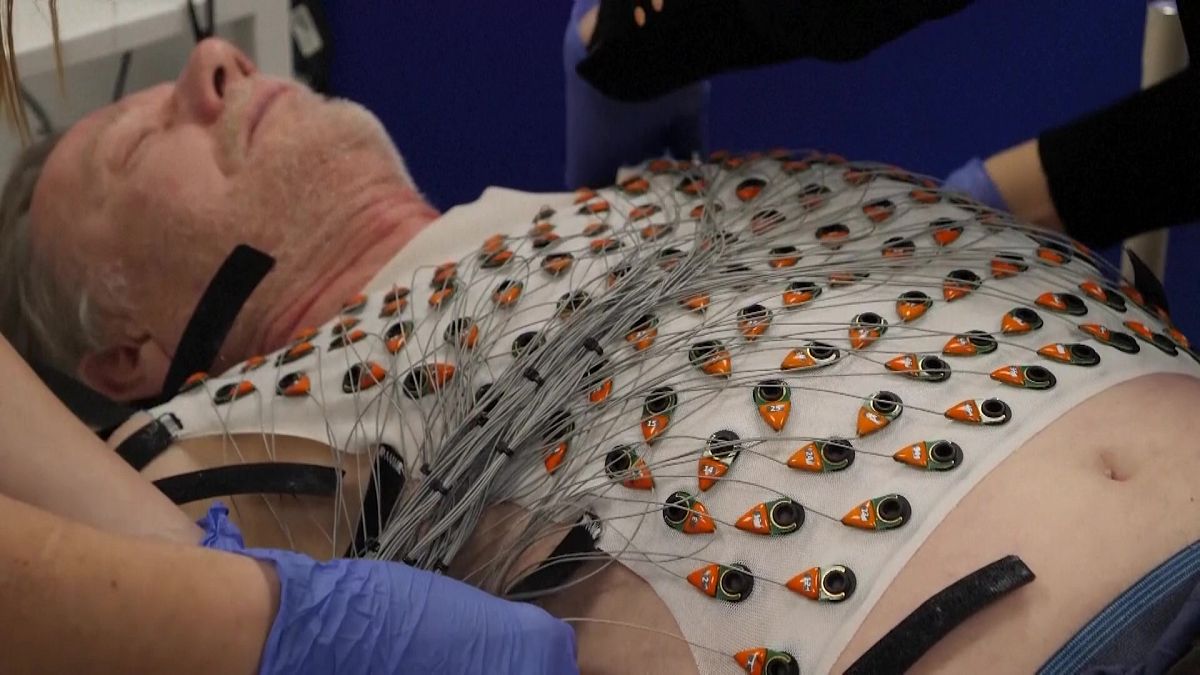The ECGI vest uses 256 sensors to give doctors a large amount of electrical information in just 5 minutes.
Doctors and researchers from University College London (UCL) have developed a new vest that could potentially be used to identify people with a higher risk of sudden cardiac death.
According to the UK’s National Health Service (NHS), about two million people in the UK experience problems with the heart’s electrical system.
Electrical signals trigger the heart to contract, regulating the heartbeat. Researchers say problems with these signals result in heart rhythm disorders.
Magnetic Resonance Imaging (MRI) scans can give doctors a clear image of the heart muscle structure and function but can’t map the electrics of the heart and the conventional electrocardiogram (ECG) examination that uses metal electrodes and gel is cumbersome and costly.
"This technology will allow us for the first time to collect the detailed electrical information of the heart and map them onto the structure and function in a way that is safe," said Dr Gaby Captur, a cardiologist at the UCL Institute of Cardiovascular Science and the Royal Free Hospital.
The ECGI vest (electrocardiographic imaging vest) is easy to use and doesn’t cost a lot.
It uses 256 sensors to give doctors a large amount of electrical information in just five minutes.
The results are three-dimensional maps of the heart, allowing doctors to look at the electrics of the heart propagating all across the cardiac chambers.
After the ECGI vest monitoring, patients are typically asked to undergo an MRI scan.
The data from the vest can then be mapped onto the MRI scan.
Low-cost and reusable
Doctors say cardiac arrests are as common in people without heart problems as in cardiac patients due to sudden, dangerous heart rhythms.
"This technology will allow us for the first time to collect the detailed electrical information of the heart and map them onto the structure and function in a way that is safe, it can be rolled out at the scale of thousands of people at a fairly low cost compared to other competing technologies," said Captur.
The secret to the ECGI vest's low cost is its re-usability.
Given its dry electrode technology, the vest can be washed in between uses, in contrast to the metal electrodes that require a layer of gel between the electrode and the skin in a traditional ECG examination.
While it’s not invasive, ECGs can cause discomfort and even require a patient to shave their body hair. It also produces more waste as the gel electrodes used in the procedure are disposable.
"On the ECGI vest that we've developed, we use dry electrodes, so we don't need to use the gel. So it's a lot more comfortable for patients. There's no skin irritation or discomfort. And also the potential for the vest to be sort of worn during an exercise test, for example, as well, which may be a bit more difficult with the conventional ECGs," said Webber.
Patient Tony Farrar, 77, has tried the vest in a trial and said it’s comfortable.
"It's no feeling at all really, I suppose. I mean, you obviously feel you're lying on something, so you've got the little pricks on the back you can feel and then when it's pumped up, you can feel the pressure of that, but it's not uncomfortable at all," said Farrar.
"It's no more, I suppose, than sitting with a big jumper on or something like that, it's in that sense there's no discomfort with it at all".
It has already been successfully trialled on around 800 people and the results have been so positive it is being prepared for a wider rollout.
The vest is currently being used to map the hearts of people with diseases such as hypertrophic cardiomyopathy and dilated cardiomyopathy.
For more on this story, watch the video in the media player above.



